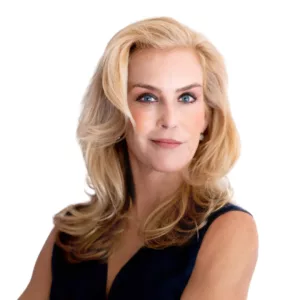“Thriving requires or presumes that the individual is growing as a person and also is making a contribution beyond the self.”
King & Mangan, 2023
I wish I could offer each of you a specific thriving program with a guarantee that it would work for you. Add a little A to a smidge of B, mix vigorously, and then you will thrive. But it doesn’t work that way. Last month I suggested that a thriving hack would be to offer more love. We discussed five pathways for accessing more love for God, self, and others. This month, we will get a little more specific, but keep in mind there is not a one size fits all program for thriving. While practicing love is a very purposeful step to take, in our complex world, most of us would benefit from a variety of practices for thriving.
If you’ve been following our blog, you know that we believe a thriving life is a life on purpose. Finding purpose matters, but each of us find purpose in our own unique contexts – within our own families, churches, communities, and broader systems in which we live. We have unique gifts, talents, and passions that inform our purposes. Our ethnicities and countries of origin inform our purposes. The needs that we see around us inform our purposes. There is a beautiful diversity in how we fit in and contribute to creation.
How well you fit in your environment matters for growth and thriving. In a paper I recently co-authored with Joanna Leidenhag on the topic of neurodiversity and thriving, we highlighted the importance of the “goodness of fit” between individuals and the systems in which they live. If the fit is poor, it is difficult for an individual to thrive. For example, a very active child will struggle in school if not allowed time for physical activity and movement. Or a person with great aptitude for creative endeavors will suffer in a job that requires repetition and little else. In helping people to thrive, we must recognize the unique needs of each individual, encouraging them into environments where natural gifts develop and where they can find ways to contribute.
It’s important to think about the goodness of fit for ourselves as well. The last few years challenged this idea of ”good fit” for many of us. Our environments seem to be more isolating, in spite of social media connections, and often are fraught with conflict. While there is much discussion of work/life balance, technology blends our work lives with our home lives in ways that discourage time for rest and respite. I’ve found that the demands of balancing work and home life are overwhelming at times, in spite of the flexibility that technology offers. I catch myself feeling as if I am striving, sometimes even just surviving, rather than thriving, and I’m in the business of helping people thrive!
Thriving is not easy, and I’m not offering a quick fix. Thriving is a process of continual growth that requires daily practices to shape and form us so that we can connect to core values and to what really matters. Practices enable our brains to slow down and be more flexible, help us navigate shifting environments, stay on course to pursue value-aligned goals, and change our environments when necessary.
For me, I’ve found that practices that enable stillness and silence help me become more agile, attentive, and purposeful. Specifically, practices that help me soften into silence let me hear God’s voice and open to God’s love. For me, silence is life-giving and necessary for my high velocity life. I practice sitting in silence during the early hours of my day, and I find that quieting my mind, and repeating the process of returning to stillness when my mind wanders, helps me become more aware of God’s love and invitations throughout my day. God’s love gives me the strength to engage with others with an open heart and mind. This practice of silence improves my ability to adapt to an often challenging environment.
Thriving involves fitting well within our environments, but many of us live in environments where we feel stifled, unseen, and unsupported. Some people may lack access. Other may lack opportunity. Some may lack quiet. That said, ask yourself how well does your environment support you, and what can you do about it? It might be easier to first consider a loved one and how they fit within their environment? Is their office a supportive environment? Do they need changes at school or at home to feel supported? If you have a child with special needs, where might they find a calm and nurturing environment? For example, a friend of mine has a son impacted by autism, and he thrives at the National Ability Center, where he can spend time outdoors, active and engaged with other kids and supportive counselors. Once you’ve thought about these questions for your loved one, perhaps you can ponder them for yourself. I find journaling, praying, or talking with a close friend very effective for self-reflection.
What do we do if it’s not possible to change an unsupportive environment? The not-so simple answer is, we have to become more flexible and adaptive. I don’t want to discount the fact that some environments and circumstances need serious attention, but the last several years certainly showed us that we need adaptivity, because change is constant. Agility and adaptability are vital to individual development since they cultivate the capacities necessary to fit well within changing or difficult environments.
I’ve written about developing agility through the practice of the 5 A’s in past blog posts. When my work environment feels very stressful, I pause and reflect on the emotions, breathing for a moment or two, accepting what is there. I believe my work matters, and I want to continue to be a researcher and writer, but there are not enough hours in the day. Regulating and reflecting help me prioritize and act with intention. On most days, I am able to set goals and patiently stick to those goals so that I can lead my team, balance my work and home life, and pursue my purpose.
A thriving life is a life on purpose, but we need to develop as individuals in order to understand and pursue purpose. We grow in reciprocity with our environments; but with a poor fit, or a rapidly changing environment, we need practices that improve our capacities to become more agile as we pursue what matters. While the practice of intentionally leaning into love broadly supports a thriving mindset, we each have to find what works for us, plus the necessary support. I don’t expect you to join me on my next 10 mile run, but you might want to explore reading, prayer, meditation, journaling, painting, yoga, walking with friends, dancing, singing in the choir, etc… Practices that help us become more agile come in many varieties, but remember that the practices you choose should help you thrive, not strive. Soften into what works for you. The ultimate goal is to grow as an individual and contribute your unique gifts and talents purposefully toward a better world.
References
Balswick, J.O., King, P.E., & Reimer, K.D. (2016). The reciprocating self: Human development in theological perspective (Second edition. ed., Christian association for psychological studies (CAPS)). Downers Grove, Illinois: IVP Academic, an imprint of Intervarsity Press
Barrett, J. & King, P. E. (2021). Thriving with stone-aged minds: Evolutionary Psychological and Christian Perspectives on Human Flourishing. Grand Rapids: InterVarsity Press.
King, P. E. & Mangan, S. Hindsight in 2020: Looking back and forward to positive youth development and thriving. In L. Crockett, G. Carlo, & J. Schulenberg (Eds.), APA Handbook of Adolescent and Young Adult Development. Washington, DC, US: APA.
Leidenhag, J. & King, P. E. . “Neurodiversity and Thriving: A Case Study in Theology-Informed Psychology,” Studies in Christian Ethics, 36:4.
Lerner, R. M., Fisher, C. B., & Weinberg, R. A. (2000). Toward a science for and of the people: Promoting civil society through the application of developmental science. Child development, 71(1), 11-22.
Walker, N. 2014. Neurodiversity: Some basic terms and definitions.
Continue Exploring

Practices
The Gift of Losing your Keys: A Story of Neurodiversity
Finding a good fit between our unique qualities and our environments helps us thrive.

Blog
Perfectionism: Turning a Struggle into a Superpower
Why do so many people struggle with perfectionism? Dr. Kenneth Wang explains.

Meaning
Living at the Intersection of Joy, Meaning, and Balance
Research indicates spirituality links meaning to joy, and may provide insight into the balance and purpose we seek.

